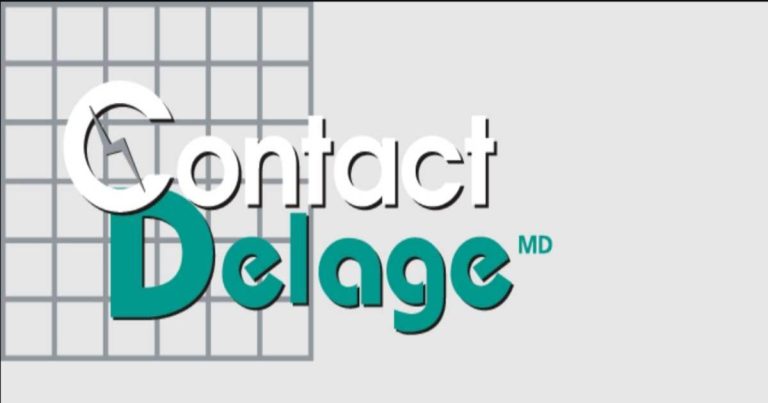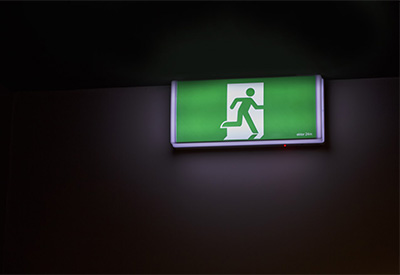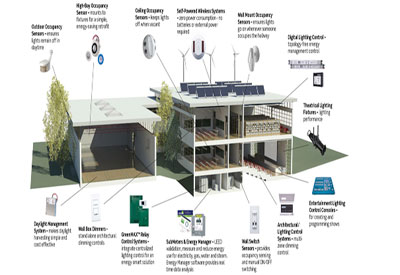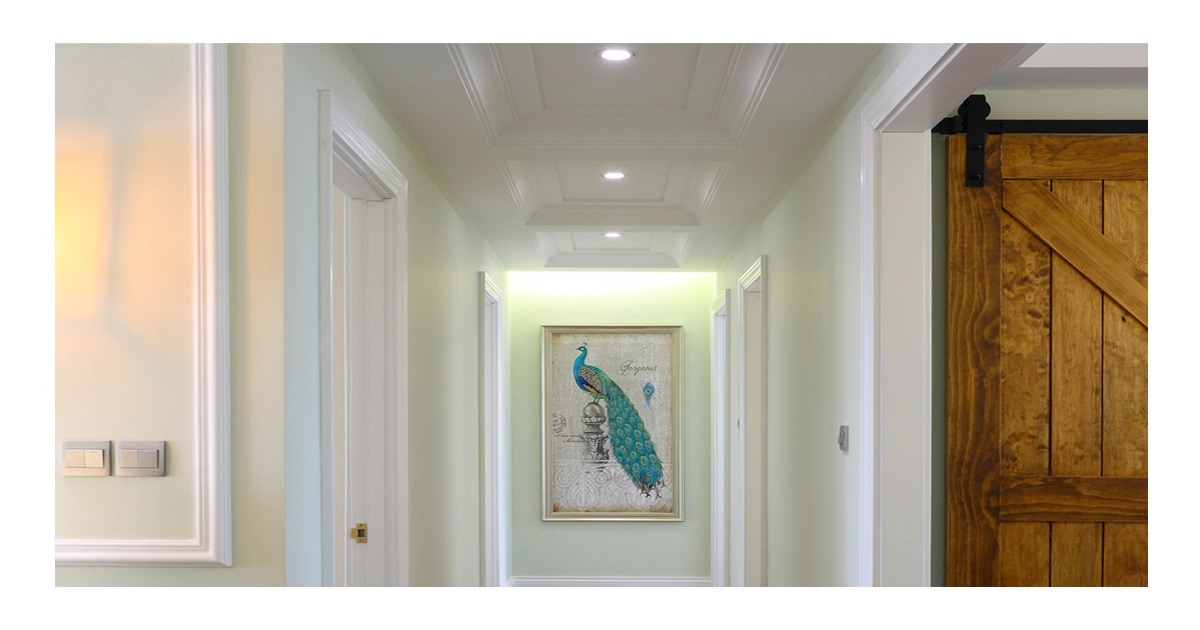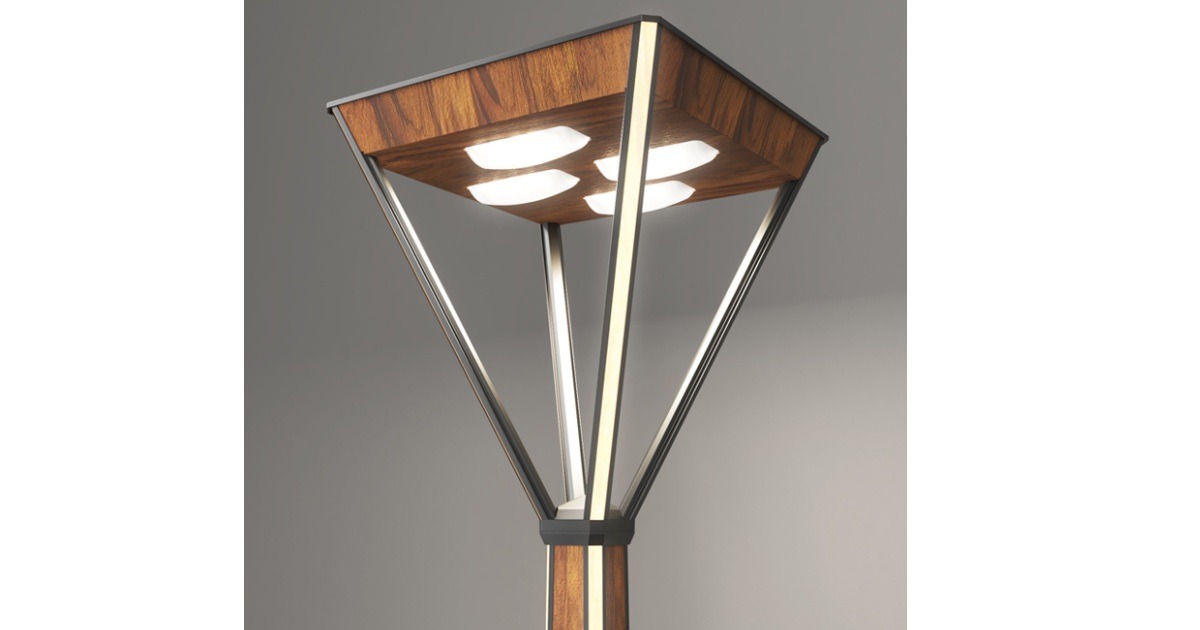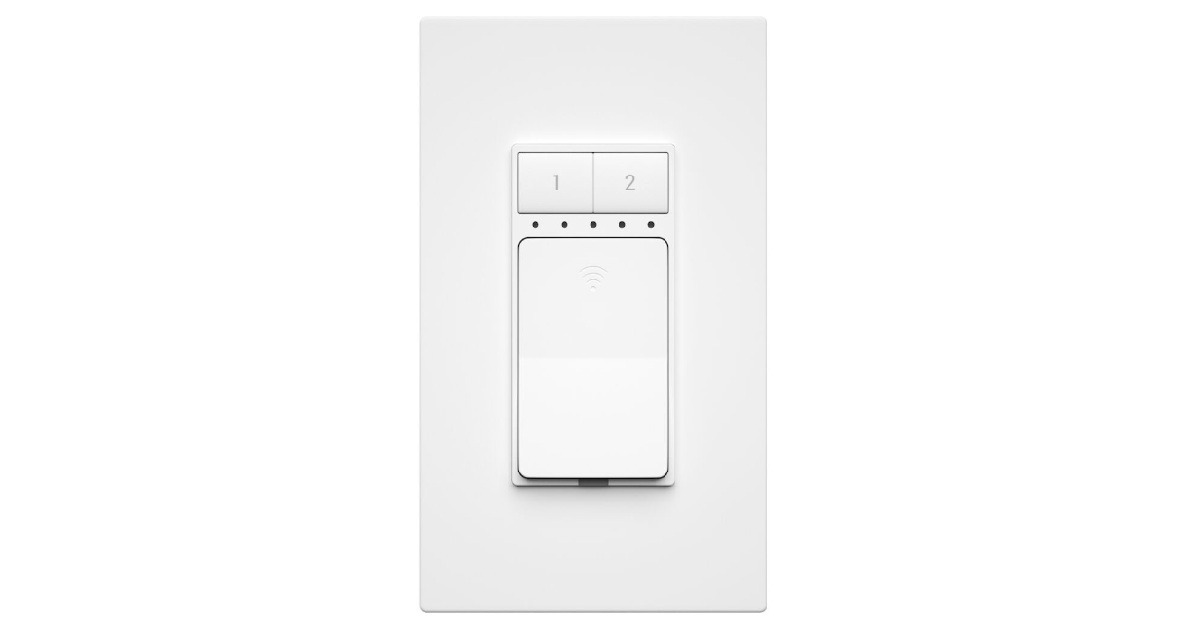Egress And Emergency Lighting in a Controls World
June 1, 2023
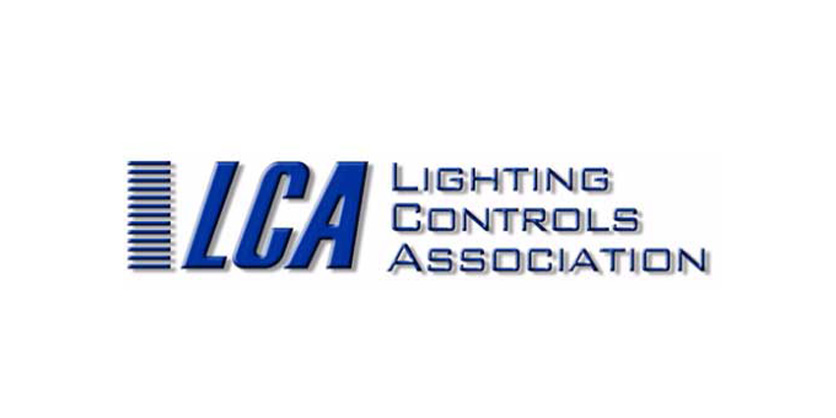
By Steve Mesh
This article on emergency lighting and controls was very much a collaborative effort. Many experts in the field—including Rick Miller, Craig DiLouie, and several manufacturers—provided extremely valuable input in reviewing and fact-checking the content.
Egress and emergency lighting are critical elements of building design. During periods of occupancy, a clear, unobstructed path out of the building must be illuminated, including during an emergency or an event when normal power is lost. This ensures occupants can exit the building safely at all times.
Egress lighting illuminates a continuous path out of the building during normal operation. Emergency lighting activates during a power outage and includes lighting providing egress illumination in addition to exit signs. In some cases, luminaires are dedicated to the purpose; other times, they may play multiple roles.
At its core, emergency lighting is simply emergency power source-supplied lighting that automatically energizes when there is loss of power to the building or lighting circuit. Properly integrating it into a lighting design can be challenging as it is often subject to various safety ratings, codes, and interpretations by the authority having jurisdiction (AHJ), typically represented by the code inspector. As a result, guidance tends to be conservative, favoring secure approaches.
This article attempts to present key considerations related to controlling egress and emergency lighting. It is provided for general educational purposes only and not intended as interpretation. For more information useful for a specific project, consult the applicable codes, manufacturers, and appropriate AHJ.
Codes with Emergency and Egress Lighting Provisions
National Fire Protection Association (NFPA) 101®, also called the Life Safety Code®, is adopted by various jurisdictions to enact occupant life/safety measures in new and existing buildings.
Another model code is the International Building Code (IBC), maintained by the International Code Council. Means of egress is covered in Chapter 10.
NFPA also maintains NFPA 70, the National Electrical Code® (NEC®), a code for the safe installation for electrical wiring and equipment.
NFPA 101 and NFPA 70 reference safety standards from Underwriters Laboratories (UL), which define the minimum behavior of products. Several Nationally Recognized Testing Laboratories (NRTLs) list or certify products that satisfy these requirements.
“Normal” versus “emergency” lighting
NFPA codes differentiate building operation condition as normal, or routine operation, and emergency, or an event in which normal building power is lost. NFPA 101 specifically addresses egress lighting requirements.
Normal conditions: NFPA 101 requires egress illumination be provided along a clear path of egress at all times that occupancy requires this path be available for use. This path is typically designated on the project plans by the architect.
Under normal power conditions, a defined path of egress must be illuminated to a minimum of 1 footcandle (fc). In certain cases such as a theater, however, the path of egress—in this case the aisles—can be illuminated as low as 0.2 fc during a movie or performance.
Emergency conditions: NFPA 101 requires emergency lighting for the path of egress automatically turn On in response to normal power loss, do so quickly, and subsequently produce a minimum level of illumination using a power source that is not normal building power.
Specifically, when normal power is lost, emergency lighting must turn On within 10 seconds and stay On for at least 90 minutes. The resulting egress illumination must produce an average light level of 1+ fc, with a minimum of 0.1 fc. Uniformity must not exceed 40:1.
Light levels along the path of egress are permitted to degrade by 40% over 90 minutes, meaning average light level may drop to as low as 0.6 fc; this allows use of batteries in emergency drivers/ballasts whose voltage will typically degrade over 90 minutes. Though consistent power is not required, some manufacturers offer emergency drivers specifically designed to provide consistent power (light output) over the entire 90-minute period.
The IBC and NFPA 101 are in alignment on these requirements, though IBC adds that in Group I-2 occupancies (medical facilities providing 24-hour care), failure of a single lamp must not reduce light level to less than 0.2 fc. The IBC also includes certain rooms to be part of the emergency lighting system even though they may not be part of the egress requirements, such as electrical rooms.
The system must be tested periodically after installation to ensure reliability. The code-required frequency of testing is once per month for 30 seconds and once annually for the full battery discharge, typically 90 minutes.
Elements of an emergency lighting solution
When power is lost, an emergency power source activates and supplies power to the lighting system designed for emergency operation. The IBC allows a battery-powered system, batteries distributed in individual luminaires, and an onsite generator. NEC Article 700 includes these and fuel cell systems.
Battery-powered systems include inverters that centralize emergency lighting operation for multiple luminaires. A distributed solution might include battery-powered emergency LED drivers.
Controlling Means of Egress Lighting
Continuous egress lighting may be provided by general lighting placing illumination on the egress path. During normal conditions, NFPA 101 allows these luminaires to be turned Off given all the following conditions are met.
1. “In new installations, the lighting control device is listed.” [e.g., UL]
2. “The lighting control device is equipped to automatically energize the controlled lights upon loss of normal power and is evaluated for this purpose.” [using an emergency source of power, e.g., with a UL 924 device]
3. “Illumination timers are provided and are set for a minimum 15-minute duration.” [minimum 15-minute time delay for occupancy sensors]
4. “The lighting control device is activated by any occupant movement in the area served by the lighting units.” [by using occupancy sensors]
5. “In new installations, the lighting control device is activated by activation of the building fire alarm system, if provided.” [e.g., fire alarm system tie-in to a networked lighting control system]
6. “The lighting control device does not turn Off any lights relied upon for activation of photoluminescent exit signs or path markers.”
7. “The lighting control device does not turn Off any battery-equipped emergency luminaires, unit equipment, or exit signs.” [e.g., constant-charging circuits for emergency drivers/ballasts, bugeye luminaires, or exit signs]
Commercial Building Energy Codes
Prevailing commercial building energy codes require all lighting automatically be turned Off when not in use. Some codes allow for exceptions, however.
The lighting control requirements in the latest version of the International Energy Conservation Code (IECC 2021) apply to all lighting except 24-hour emergency or security lighting, emergency egress lighting that is Off during normal building operation, and lighting for interior egress stairways, ramps, and passageways. The IBC references the IECC.
The ANSI/ASHRAE/IES 90.1-2019 energy standard allows an exception for a “lighting load not exceeding 0.02W/sq.ft. multiplied by the gross lighted area of the building” to remain On at all times. The standard does not specifically call out that this lighting power must be used for providing egress illumination, however.
In California’s Title 24, Part 6-2022 building energy code, neither manual area controls (e.g., local switches/dimmers) nor automatic shutoff controls (e.g., occupancy sensors) are required for up to 0.1W/sq.ft. of lighting power as long as it is specifically for “means of egress illumination.”
General/Emergency Lighting
Means of egress illumination under emergency power may be achieved by installing dedicated emergency luminaires or general luminaires that double as emergency luminaires during a loss of normal power. Options include:
“Bug-eye” units: So nicknamed because of a majority of these luminaires feature two aimable lamp heads, bug-eye luminaires may be installed either as standalone units or integrated with exit signs. A typical unit contains an integral battery and circuitry designed to detect a loss of normal power. When normal power is lost, the unit detects that loss on the constant-charging circuit that keeps the internal battery fully charged. In response, the circuitry automatically switches the battery and turns the lamps On.
This is a simple and reliable method, and being fairly self-contained, it does not require any interaction with the normal general lighting nor with any controls associated with that lighting. A tradeoff is the aesthetics of the visible hardware, particularly in higher-end architectural spaces. Additionally, acquiring the luminaires and bringing dedicated circuits to them imposes a cost.

Image courtesy of Signify North America Corporation.
General luminaires with EM drivers or ballasts: General luminaires may be installed that provide illumination under normal power and include emergency (EM) drivers or ballasts for egress illumination during a loss of normal power.
This method eliminates the complexity of powering architectural luminaires from utility power and then switching over to emergency power sources (i.e., generators or central battery inverters) when the normal power sensing detects a loss of normal power.

Image courtesy of Signify North America Corporation.
Automatic transfer switch: General luminaires can also be provided with power that transfers from a normal source to an emergency source. An automatic transfer switch—ATS, with a UL 1008 listing (often referred to as an Automatic Emergency Transfer Switch, or AETS, since not all UL 1008 automatic transfer switches are rated for emergency)—would provide either normal utility power or power from a generator or an inverter-based system.
When centralized, this device would be upstream from a normal/emergency lighting panel, resulting in a relatively simple method of providing emergency power to general luminaires. To help in ensuring clear understanding in coordinating the building wiring, the 2023 NEC language was also clarified to align more with common practice by clarifying emergency panels that are switched between a normal and emergency source shall be designated as normal/emergency.
When implementing an automatic transfer switch approach, additional measures may be required to ensure that the required illumination results, including the mitigation of the impacts from switches, dimmers, and any other controls.
Branch circuit emergency lighting transfer switch: In situations where separate normal and emergency-only power is brought to an individual luminaire, a Branch Circuit Emergency Lighting Transfer Switch, or BCELTS, provides an alternative to centrally transferred architectures like ATS.
These devices also carry a UL 1008 listing for emergency transfer and operate in the same way but are limited to lighting only and a maximum of 20 amps (many may carry a lower rating), enabling them to provide power for only one lighting branch circuit or luminaire. If that is all that is needed, a BCELTS can be a satisfactory solution without having to design and install a central ATS.

Image courtesy of Signify North America Corporation.
Emergency Lighting Control Devices
As demand grew for general luminaires that could double as emergency lighting, some complexity was introduced to codes and standards. This is because using general luminaires to provide normal as well as emergency egress illumination involves integrating different systems and power sources.
Over the past decade, significant changes have been made to UL 924, Standard for Emergency Lighting and Power Equipment, NFPA 101, and the NEC relating to the integration of emergency lighting with control systems. Overall, standards and definitions have become more general about capability to recognize changes in technology enabling new approaches.
Published in UL 924 in 2018, the definition of Emergency Lighting Control Devices (ELCD) was added to provide flexibility in compliance by enabling system-level approaches that go beyond the traditional integral emergency battery or automatic load control relays (ALCR). It also potentially opened up integration with other systems such as networked lighting controls.
NEC Article 100 defines a Control Device, Emergency Lighting as a “separate or integral device intended to perform one or more emergency lighting control functions.” This is followed by a note to reference UL 924 for information about Emergency Lighting Control Devices, previously described in this article, bringing these standards into alignment.
Additionally, in the most recent version of UL 924 (effective May 2022), UL refined the requirements for Emergency Lighting Control Devices (ELCD) with control functionality. These include a requirement for a means to monitor power status via a continuous wired or wireless signal monitoring feature independent of the emergency power feeding through the ELCD to the lighting load (i.e., a simple power interruption cannot be used to trigger emergency mode).
Directly Controlled Emergency Luminaires for Dimming during Emergency
The lighting controls revolution and proliferation of dimming capability introduced another layer of complexity to using the same luminaires for both normal and emergency functions. Today, an LED luminaire might include the light source, power unit, relays, sensors, and wireless transmitters and receivers capable of a broad range of control functions.
There are several approaches to bypass this complexity at the luminaire or branch circuit level using different listed UL 924 devices or systems, forcing the luminaires to operate as if they do not have a control input during an emergency situation. However, some designers have wished to incorporate dimming to a specific emergency level either to reduce the connected load or to achieve some specific effect.
In these situations, there is a critical need to additionally certify the luminaire emergency lighting level in addition to using specific controls—specifically as a Directly Controlled Emergency Luminaire.
The 2017 NEC and UL 924 define “directly controlled luminaires” as having the ability to automatically override the normal control setting and produce an appropriate light output/light level during a power outage. The terminology evolved over the last three NEC code-making cycles, but the most recent edition provides important updates. With the 2023 version, the NEC’s Article 100 defined “Emergency Luminaire, Directly Controlled” as a “luminaire supplied by the facility emergency power system and with a control input for dimming or switching that provides an emergency illumination level upon loss of normal power.”
As with many aspects of the NEC, it is necessary to combine a definition with a requirement in order to properly understand and apply. The Article 100 definition is combined with a requirement in the 2023 NEC’s Section 700.24, which reads: “Where emergency illumination is provided by one or more directly controlled emergency luminaires that, upon loss of normal power, respond to an external control input to establish the required emergency illumination level, such directly controlled emergency luminaires shall be listed for use in emergency systems. Luminaires that are energized to the required emergency illumination level by disconnection of their control input by a listed emergency lighting control device shall not be required to be listed for use in emergency systems.”
In other words, a Directly Controlled Emergency Luminaire is a luminaire designated for normal/emergency use and that has a control input (e.g., 0 or 1 10V dimming, DALI, wireless, etc.) that is either:
a) Additionally Listed to UL 924 with Active Control: not disconnected by a listed device and therefore includes capabilities to automatically override any control setting using a built-in bypass and produce a specific, dimmed light output during a power outage. During such an emergency, the luminaire responds to an external control input to establish the emergency light level, such as a DALI emergency lighting preset or DMX512 preset emergency lighting scene. The luminaire therefore must obtain a separate UL 924 listing for this purpose, including a means to measure or calculate the light output/light level during the design and installation.

Image courtesy of Signify North America Corporation.
b) Provided with a Listed Disconnect: If the control signal is disconnected by a listed device during a loss of power and the luminaire automatically energizes to the required emergency light level that is not programmable (such as 0 or 1 10V), additional listing is not needed. Caution: If the response to loss of signal (e.g., DALI or DMX512) must be configured, the luminaire documentation should alert the user/installer and the AHJ may still require a UL 924 listing.

Image courtesy of Signify North America Corporation.
Serving safety
Emergency lighting is considered a critical element for ensuring occupants are able to safely exit a building during an emergency. As such, it is subject to a significant number of codes, standards, and safety ratings.
The power source may vary and as a result be centralized or distributed, and the emergency lighting functionality may be designed as a separate silo or in an integrated state with the normal general lighting. Each approach has its pros and cons and particular challenges, but the goal is always the same: provide sufficient illumination for safe egress.
Project participants are recommended to review the listing of each component and then evaluate the entire system to ensure code-compliant light levels are provided upon loss of power, whether that be by transfer, bypass, or control system state. The AHJ may inspect the system to ensure compliance. Some manufacturers provide a test button to simplify testing.
Overall, adoption of LED lighting with built-in control functionality is facilitating using luminaires for both normal and emergency lighting. The designer must take care to ensure these luminaires are properly listed and operate in accordance with life/safety codes, regardless of how they are controlled during normal operation. Manufacturers can be a valuable source of support for challenging applications.
Published with the permission of Lighting Controls Association.
More information available here

